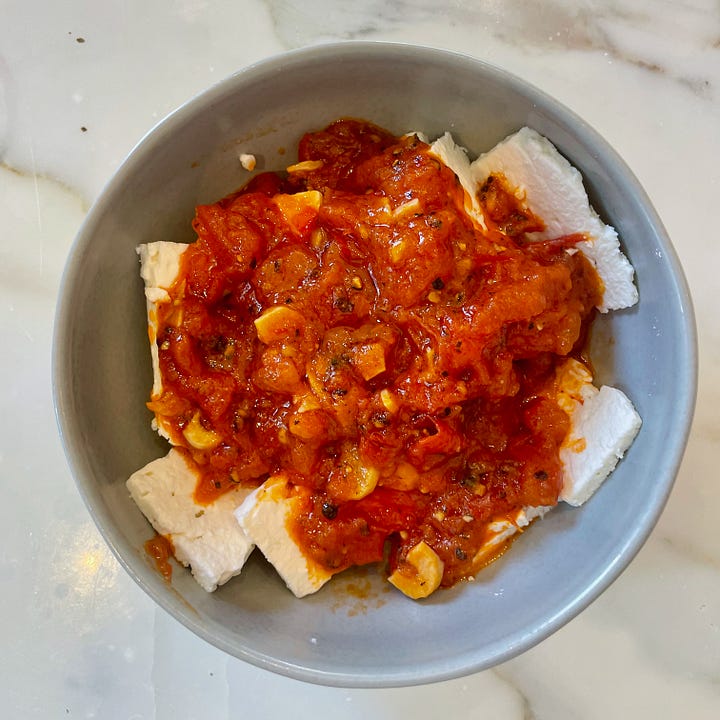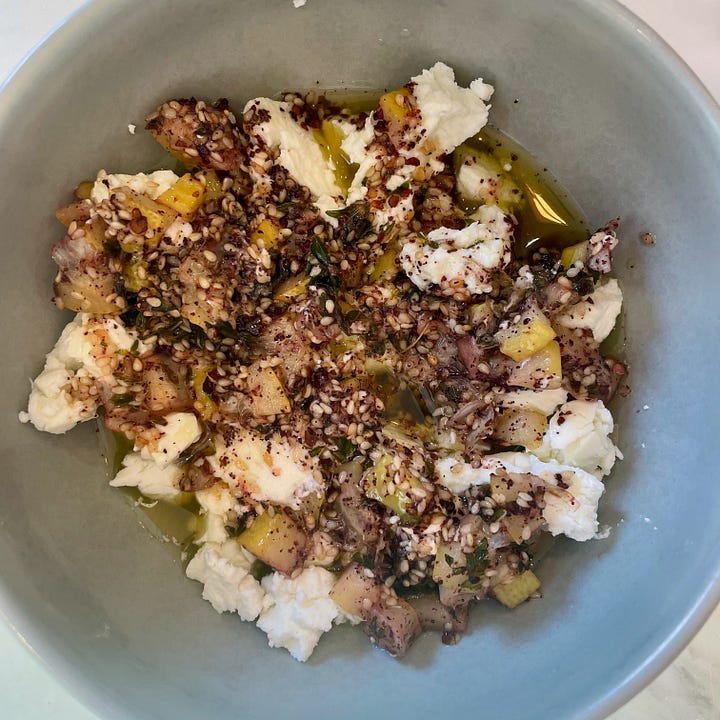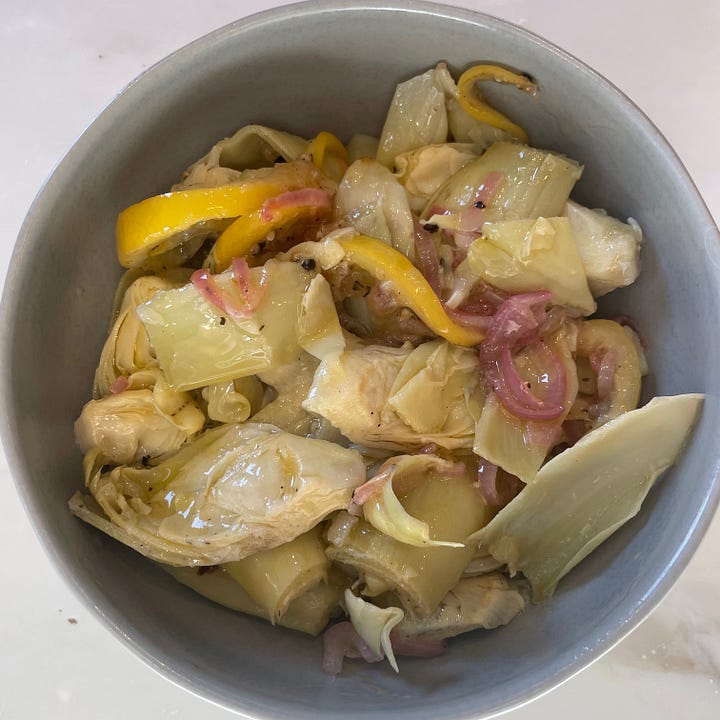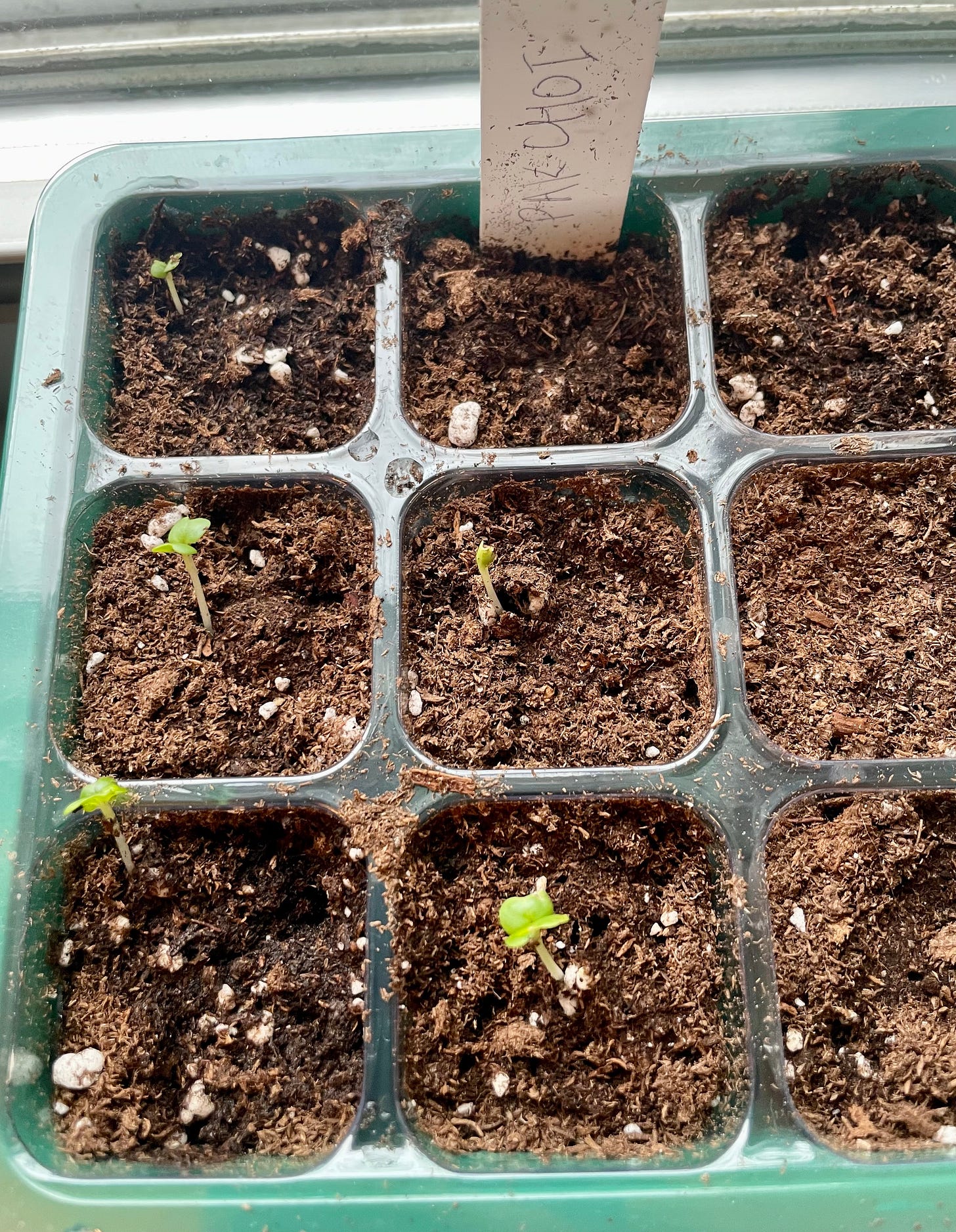Look! I’m doing it! I’m writing more!
That’s probably because I’m cooking more, which means my brain is bubbling over with recipes and ideas and grand plans. Tuesday night, I used Monday’s chicken carcass to make the best-smelling chicken stock I’ve ever sniffed. Wednesday, I planted seeds in grow pots; there are already little pak choi sprouts popping up on the windowsill.
The day before I got married, I spent the afternoon making a cheese and charcuterie platter — in part because I feel an unwavering compulsion to feed the people around me, and in part to distract me from my nerves. The whole enterprise took three grocery trips and an hour of nudging prosciutto into place and stacking Marcona almonds into an elaborate cascade. It was a rote exercise, mindless. When you’ve assembled 100 cheese plates over the course of your late 20s and early 30s, what’s 101?
I’ve operated for most of my life as if there is no such thing as too much cheese, and I stand by that principle. But recently, charged with bringing some kind of cheese-based appetizer to a friend’s house, I balked. I didn’t want a cheese plate, but I wanted cheese. More specifically: I wanted the idea of a cheese plate, just not the execution. Hmm.
A couple hours and at least seven cookbooks strewn across my counter later, I landed on a solution, thanks to Alison Roman’s “Nothing Fancy”: spicy tomato-marinated feta, marinated artichoke hearts and creamy goat cheese with lemony za’atar. They were crisp, salty, savory and acidic — exactly what I didn’t realize I wanted. Traditional cheese plates, beware.




Since then, I’ve been playing around with the feta recipe, trying to get it a bit less oily while also upping the ante on the spice and garlic levels. On the third try, success.
Harissa-Marinated Feta (adapted from Alison Roman’s “Nothing Fancy”)
½ cup olive oil
2 ripe tomatoes
3 cloves of garlic, minced
Kosher salt
½ teaspoon red pepper flakes
3 tablespoons harissa
juice from half a lemon
8 ounces feta cheese, cut into thin planks
pomegranate molasses to drizzle
//1// Chop your tomatoes any which way, just decently small enough.
//2// Heat the olive oil in a skillet over medium heat. Add the garlic and cook for about 2 minutes, until it begins to get soft and starts to ever so slightly brown.
//3// Add the tomatoes and all the juices they may have lost while you chopped them up (watch out for splatter!), along with a big pinch of salt. Cook them until they break down, pressing larger chunks into the pan, breaking them up, to help them soften. It’ll take 5-6 minutes.
//4// Add the red pepper flakes and harissa and keep cooking for another 3-5 minutes.
//5// Meanwhile, slice your feta into thin planks and arrange them in the bottom of a bowl. Once they’re all laid out, press down with a fork or spoon to break them up into smaller pieces. It doesn’t have to be exact, you just want some cracks in your planks of feta.
//6// When the tomato-harissa mixture has formed a sauce/paste (I’m talking chunky but pretty uniform), remove it from the heat and add the lemon juice, plus salt and pepper to taste. You’ll definitely want a big pinch of salt. Next, pour the still-warm mixture over the feta, making sure it gets in all the nooks and crannies, and put the whole thing in the fridge, at least overnight, to do its thing.
//7// Before serving, let the feta come to temperature outside the fridge for at least an hour. Drizzle it with pomegranate molasses, and you’re good to go.
But wait, you might ask, how shall I eat this? With a fork is one option, though probably best saved for unsupervised leftovers. Store-bought pita or crackers will work, too. Let me do you one better, though: Take the extra hour or so to make Smitten Kitchen’s layered yogurt flatbreads.
I’ve made them a couple times and have gotten the best results using full-fat Greek Yogurt and 3ish tablespoons of water; too wet of a dough will make the flatbreads somehow too tough and too chewy at the same time. A bonus endorsement: These things really do keep well in the fridge.







Love it❤️❤️❤️❤️